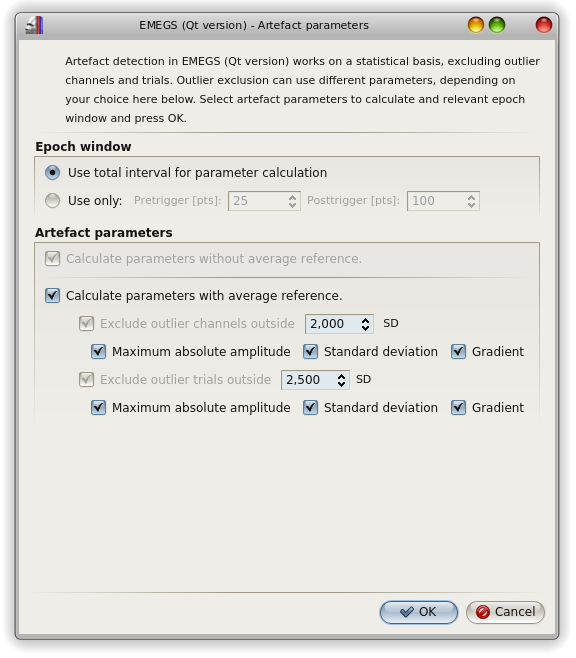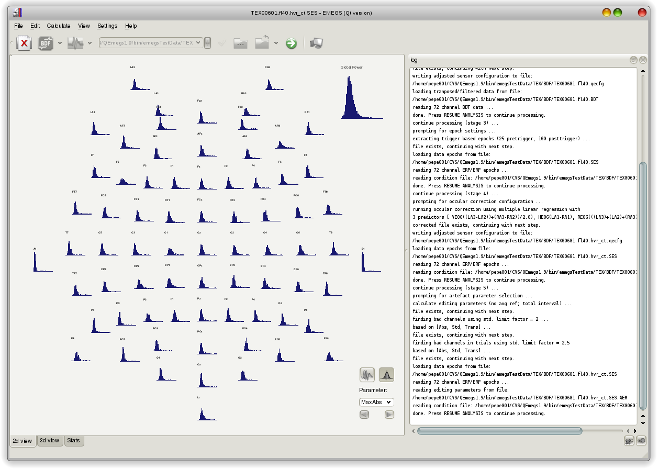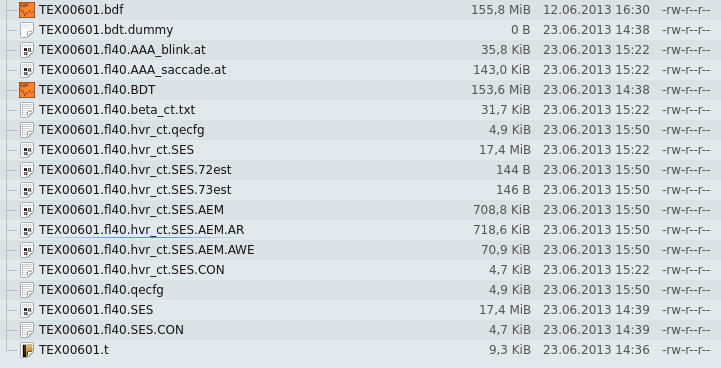

The calculation of statistical signal parameters for each trial
forms the basis of artefact detection in EMEGS. This calculation
is configured on the next dialog, shown here below. By
default, all points of the epoch are included in these
calculations, but calculations may be restricted to a subset of
points. Parameters must be calculated on the raw data ("calc
without average reference") , but in addition - if an
average reference transformation is activated - they can be
calculated after application of an average reference ("calculate
parameters with average reference"), which gives better editing
results for high density EEG configurations.
As the application of an average reference is heavily distorted
by generally artefactual channels and trials, the parameter
calculation with an average reference applied requires two
additional routines that scan the data for such generally
artefactual channels ("exlude outlier channels") and trials
("exclude outlier trials").


Depending on wether you have selected to calculate parameters
also after application of an average reference, a different number
of new files have appeared in your data folder. Without average
reference, only one additonal *.AEM-file has appeared, containing
the statistical paramters for all channels and trials:

The exclusion of outlier channels required for an average
reference creates two additional files, so called electrode status
files (*.*est), containing the good/bad-status of all sensors. The
exclusion of outlier trials creates the *.AEM.AWE file, which
contains the good/bad status for all trials for all channels. The
following second pass through the parameter calculation routine
(now with a mostly undistorted average reference) produces
the file *.AEM.AR, which is equal to the *.AEM file, except that
it contains the statisical parameters after application of the
average reference. Your folder in this case looks like this:
